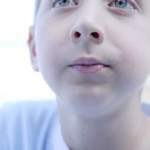Central Auditory Processing Disorder
Central Auditory Processing Disorder (CAPD) affects about 5% of children. Central Auditory Processing Disorder means that the Auditory Processing Disorder is the “central” or primary diagnosis. Inherent in children diagnosed with an Autism Spectrum Disorder are many “auditory processing deficits,” but one would not diagnose the child with Autism with CAPD, as Autism is the primary diagnosis. The deficits, whether primary or secondary still remain nearly the same, and the following will detail the symptoms and ways both parents and teachers can support auditory processing deficits.
Children with CAPD cannot process the information they hear in the same way as others because their ears and brain do not fully coordinate. The brain does not recognize or interpret sounds like a typical child and specifically affects sounds composing speech. Children with CAPD often do not recognize subtle differences between sounds in words, even when the sounds are loud and clear enough to be heard. Those who have CAPD can hear, but they have difficulty making sense out of what they hear. For example, they may have a hard time understanding if there is background noise and may miss words being said to them.
Detecting CAPD
Children with CAPD are thought to hear normally because they can usually detect pure tones that are delivered one by one in a very quiet environment (such as a sound-treated room). These children do not have a loss of hearing sensitivity, but they do not process auditory information typically. If no intervention is taken early on, children with CAPD can develop speech and language delays as well as academic deficits. Symptoms of CAPD can range from mild to severe and can take many different forms.
CAPD is often misunderstood because many of the behaviors associated with it can appear in other disabilities like learning disabilities, attention deficit hyperactivity disorder (ADHD), and even depression. It is possible to have both CAPD and ADHD, specific language impairments, or learning disabilities.
Diagnosis
Audiologists (hearing specialists) can determine if a child has CAPD. Although speech-language pathologists can identify it when interacting with the child, only audiologists can perform auditory processing testing and give the diagnosis. Once diagnosed, children usually work with a speech-language pathologist for treatment.
Common Problem Areas for Children with CAPD
1. It can be very difficult for a child with CAPD to pay attention if there’s noise in the background, like a low-structured classroom
2. It may be difficult for a child with CAPD to remember information such as directions, lists, or study materials
3. The child can also have difficulty hearing the difference between words or sounds that are similar (COAT/BOAT or CH/SH). This can affect following directions, reading, spelling, and writing skills
4. The child can have trouble staying focused on listening long enough (directions, lecture, etc.)
5. Lastly, there could be difficulties drawing inferences from conversations, understanding riddles, or comprehending verbal math problems.
How to Help
Some steps parents can take include:
- Reducing background noise at home and at school
- Have your child look at you when you’re speaking
- Use simple sentences
- Speak at a slightly slower rate and at a mildly increased volume
- Ask your child to repeat the directions back to you and to keep repeating them aloud (to you or to himself or herself) until the directions are completed
- For directions that are to be completed at a later time, writing notes, wearing a watch, and maintaining a household routine also help
- Provide your child with a quiet study place (not the kitchen table).
- Assign regular and realistic chores, including keeping a neat room and desk.
Some steps teachers can take include:
- Alter seating plans so the child can sit in the front of the room or with his or her back to the window
- Provide additional aids for study, like an assignment pad or a tape recorder
As mentioned above, children with CAPD must be diagnosed by a professional and it should not be assumed that they have this disorder because they show some of the symptoms. There could be many other reasons for the behavior of “not paying attention.”
Check out these other blog posts about language and communication:

